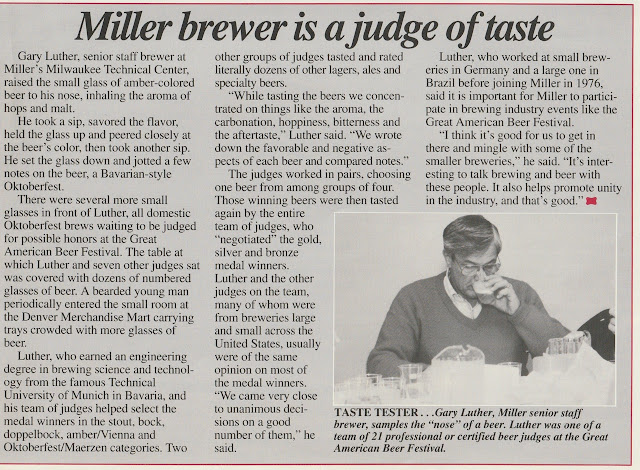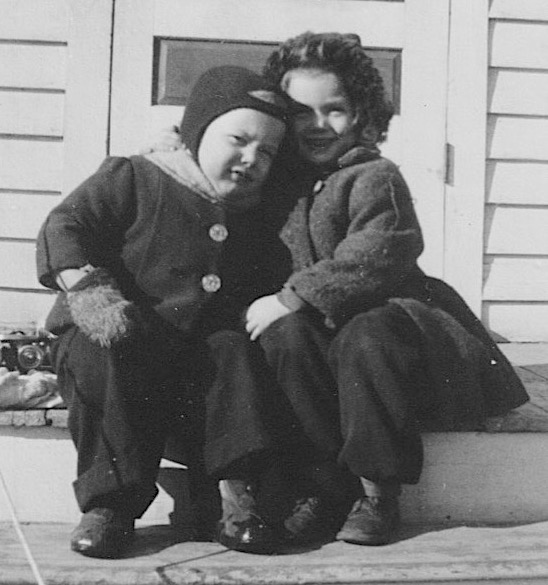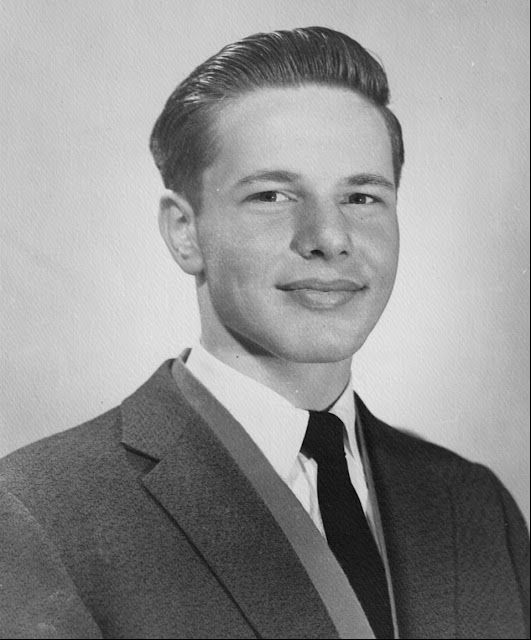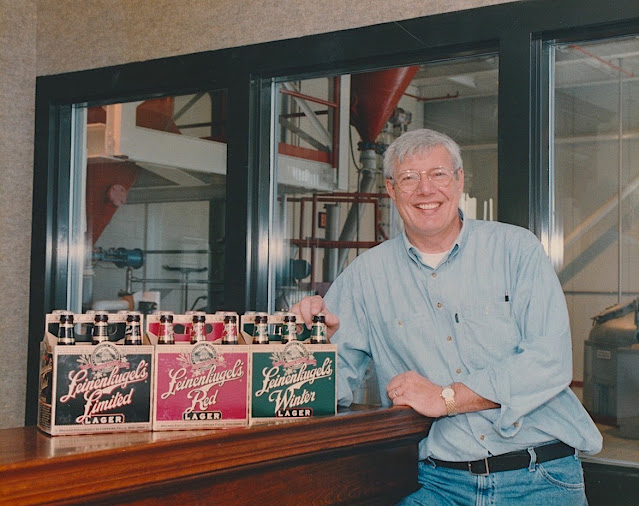Prohibition led to a flood of novel mayhem in Oshkosh. Here's one of those stories…
There once was a little grocery store at the corner of Elmwood and Woodland. It was run by an old-timer named Amos Luessen. His store had been in the neighborhood for years.
Thieves broke into Luessen's store on the night of October 24, 1923. They didn't get much: 90 cents and several cartons of cigarettes. Luessen figured it was neighborhood kids. He was going to find out. He was going to take care of this himself.
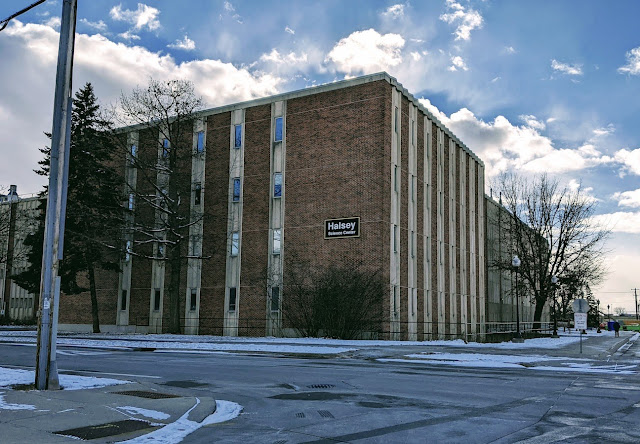 |
| The former site of Amos Luessen's corner store is now occupied by the Halsey Science Center on the UW-Oshkosh campus. |
A couple of nights after the Luessen break-in, Winnebago County sheriff's deputies raided a desolate resort on Stroebe Island. The place had been turned into a speakeasy. The cops barged in, arrested Harry Stroebe, and confiscated his stock of moonshine. Stroebe was set free on bond. His booze was taken to the county jail in Oshkosh and locked in a cell on the second floor.
 |
| Stroebe Island in the Fox River at Menasha. |
After asking around, Amos Luessen concluded that the break-in at his store wasn't the work of neighborhood kids. He called the police and reported the crime.
A few days later, the cops heard about a couple of local delinquents peddling stolen cigarettes. Albert Youngworth, 19, and Louis Kaltenbach, 18, were arrested and charged with the burglary of the Luessen store. They were taken to the county jail and locked in a cell on the second floor.
 |
| The old Winnebago County Courthouse at the northeast corner of Ceape and Court streets. To the immediate right of the courthouse is the jail where Youngworth and Kaltenbach were held. |
Neither Youngworth nor Kaltenbach could make bail. These were not young men of means. They were from poor families, and they had been in trouble before. There was nothing to do but wait for their court date. And think about how to get their hands on some of that moonshine sitting there in the opposite cell.
On the Friday afternoon of November 10, Youngworth or Kaltenbach succeeded in their quest to obtain the moonshine. The jailers were never able to explain how they did it. But by dinner time the two young men were full of shine and wicked ambition. They dreamed up another plan.
At 6:20 pm, jailers Fred Radkey and Herman Nass entered the jail cell to collect the prisoner's dinner plates. Youngworth was ready, waiting with a bunk chain wrapped in a towel. "They came at us like wild animals on their prey," Radkey later said.
Youngworth chain-whipped the jailers and then dashed through the jail-cell door. Kaltenbach was trailing him, but his escape was blocked when Radkey stumbled into the cell door, slamming it closed.
Youngworth kept running. “(He) ran down the stairs carrying the towel containing the bunk chain with him," Radkey said. "He probably expected to encounter someone in the hall. He ran out the side door dropping his weapon just outside”
In Youngworth's other hand was a bottle of moonshine. He held it tight as he sprinted into the dark.
The jailers called the police. The cops arrived to find Radkey and Nass drenched in gore from flowing head wounds. The two-pound, iron bunk chain they’d been whipped with had connected with such force that it broke through the towel it was wrapped in.
Youngworth had darted across Ceape Avenue heading for the factory complex making up the Oshkosh Gas Works and the Robert Brand Company. The adrenaline spike seems to have deserted him after about 100 yards. He hid behind a building and rewarded himself with another draw of moonshine. Liberty. For a little while.
 |
| The Robert Brand Company at the lower left and the Oshkosh Gas Works at the lower right. A portion of Ceape Ave. can be seen running left to right (east/west) in the image. |
At 7:45 pm, Youngworth was found by a motorcycle cop named Roy Welton. The bottle of moonshine was half empty and Youngworth was so drunk, Welton said, that “he hardly knew what he was about.”
A few days before Christmas 1923, Youngworth was convicted of assault with intent to do great bodily harm. He was sent to the reformatory in Green Bay. The assault charge against Kaltenbach was dismissed. He was given a short jail stay for the burglary charge. Kaltenbach was on parole and back on the street in the spring of 1924.
Albert Youngworth returned to Oshkosh in early 1925. He picked up where he had left off. In June of 1925, Youngworth stuck a gun into the ribs of a speakeasy operator and demanded a bag of cash. There was no bag of cash to be had. Youngworth ran away.
 |
| The Reptile Palace at 141 High Street, where Albert Youngworth attempted his failed stick-up. In 1925, this was a speakeasy called the Blue Front Buffet. |
Youngworth was arrested two days later and again placed in the county lockup. It was a reunion of sorts. Kaltenbach, who had been picked up on a parole violation, was at the jail with him. This time there was no moonshine.
Youngworth was sent to Waupun where he did five years of hard labor. The judge threw in a bonus: once a year Youngworth was to serve 24 hours in solitary confinement. After his release from Waupun, Youngworth left Wisconsin and ended up in San Francisco working as a janitor. There he appears to have led a rather solitary and more settled life.
Kaltenbach never lost his appetite for trouble. He got married in 1924, beat his wife, and was soon divorced. He remained on perpetual probation for a litany of petty offenses, and in 1926 was given a 19-month stay at the reformatory in Green Bay. He returned to Oshkosh and continued racking up the arrests: drunken driving, drunk in public, petty theft. In 1932, he was convicted of committing a string of burglaries and was sentenced to three years at Waupun. It went on and on like this.
For the last 30 years of his life, Kaltenbach lived in a rented segment of a tumbledown home on Division Street. Where the trains swept by his doorstep day and night.
 |
| The Soo Line rumbling down the 500 block of Division Street. Kaltenbach lived on the west side of the street (right side of this photo) in a home near the bend in the track. |
Kaltenbach remained a reprobate all the while. His last arrest was in the summer of 1973. He was 68 years old and taken into custody for disorderly conduct.
Louis Kaltenbach died at home on September 18, 1984. There was no one to mourn him. His brief obituary ran the following day and was as devoid of affection as his entire life seemed to be.
He's buried somewhere out there in Riverside Cemetery.












